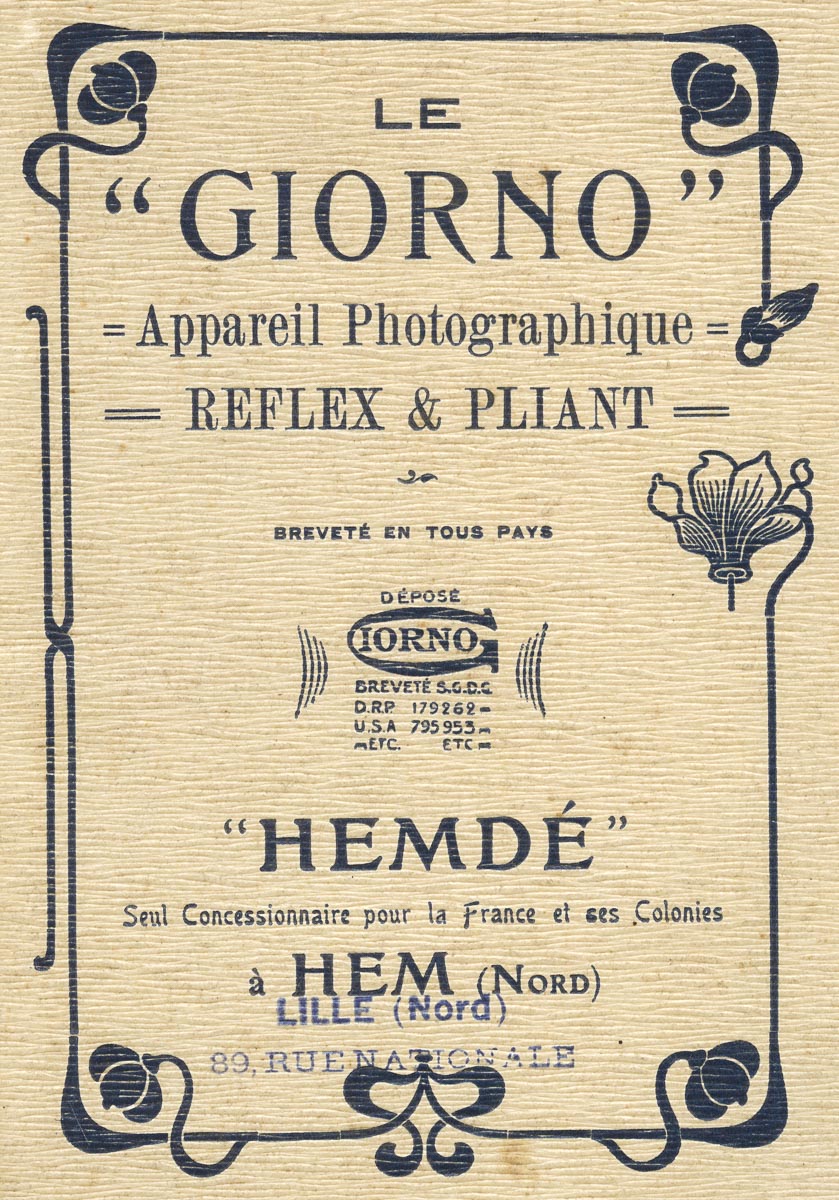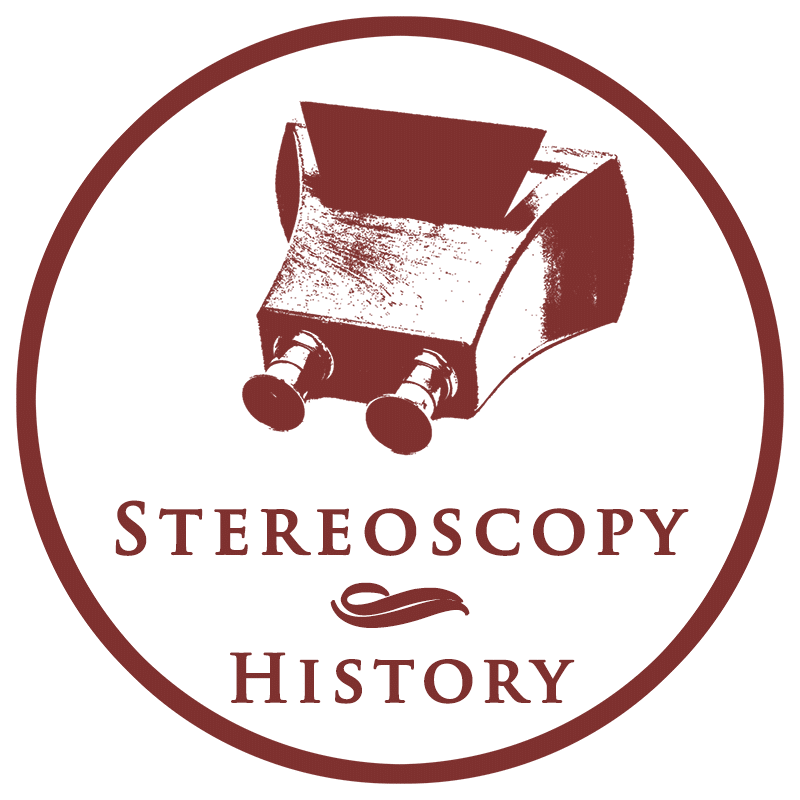Hemdé was a trademark for photography accessories and stereoscopes. The name was composed of the company’s location in Hem, near Lille in northern France, and letters from the surname of the founder, Maurice Delécaille. From 19021, the company advertised accessories for the development of photographic glass plate negatives, and from 1908, Hemdé was the exclusive dealer in France for the camera Le Giorno2.

Delécaille patented a design for a stereoscope mechanism in 1907, together with Émile Cuny and Paul Sorel3. Sorel owned a photography store called Photo-Luxe at 89, Rue Nationale in Lille4. He became the second director of Delécaille’s company5, which was renamed to Societé Delécaille et Sorel. The company was dissolved on 31 December 19096. The breakup between Delécaille and Sorel was a friendly one because the manufacturing of Hemdé products and stereoscopes was continued by Sorel. The business activities moved from Hem to Lille. From that moment on, the stereoscopes bore both names, Hemdé and Sorel. Hemdé products were sold to consumers and offered via resellers. Stereo camera manufacturer Lucien Leroy offered the Hemdé stereoscopes in his catalogue from 1913. The Hemdé products were exported to Belgium, Germany, Switzerland, Italy and Spain.
Sorel died on 3 February 19137 at the age of 36, and the company was split up. Photo-Luxe was continued by Léon Hamy at 89, Rue Nationale. The business activities that were linked to the Hemdé brand were continued by Sorel’s widow8, Rose Dejonghe9. She moved the company to 9, Rue Macquart in Lille, which was her residence. The company continued operating under the name P. Sorel.
After the outbreak of the First World War, Lille was occupied by the German army on 13 October 1914. An occupation of four years followed, which took a heavy toll on the city and its inhabitants. The manufacturing and sale of Hemdé products could probably not continue in these difficult circumstances. Many companies were plundered by the German army of machines and raw materials to support the German war effort. Lille was liberated on 17 October 1918. The company of Sorel’s widow had survived the war or was revived, because in 1919 it advertised the Hemdé stereoscopes again10. This time the address was 3, Rue Macquart, and the company probably only focused on sales through retailers and wholesalers. Some stereoscopes have been seen with a label showing the new address.
No new advertisements from the company appeared after 1919, but Hemdé’s products were promoted in advertisements and catalogues of resellers until the mid-1920s.
References
- L’Information photographique (1902), p. 81. Via: gallica.bnf.fr ↩︎
- Hemdé (1908) Le “Giorno” Appareil Photographique ↩︎
- Cuny, E., Sorel, P. and Delécaille, M. (1907) Vis perfectionnée. Via: data.inpi.fr ↩︎
- Photo-Luxe in Le Nord photographe (1914). Via: gallica.bnf.fr ↩︎
- Bulletin de la Société française de photographie (1909), p. 14. Via: gallica.bnf.fr ↩︎
- Archives commerciales de la France (16-02-1910), p. 316. Via: gallica.bnf.fr ↩︎
- Le Grand écho du Nord de la France (05-02-1913). Via: gallica.bnf.fr ↩︎
- L’Information photographique (1913), p. 210. Via: gallica.bnf.fr ↩︎
- État civil (Mariages) – Lille, Nord, France. Via: geneanet.org ↩︎
- Le Grand écho du Nord de la France (31-08-1919). Via: gallica.bnf.fr ↩︎
